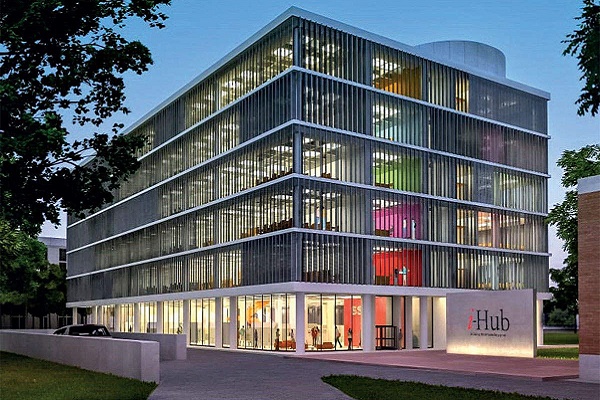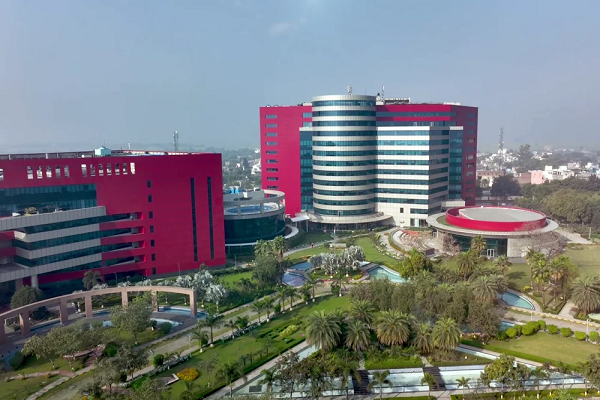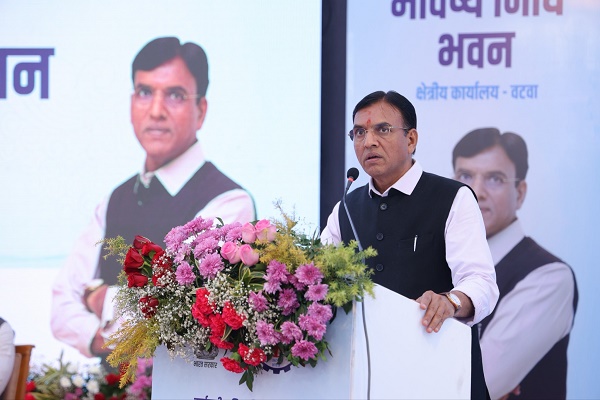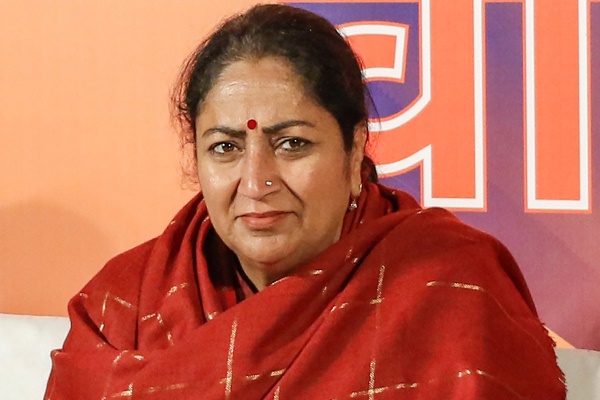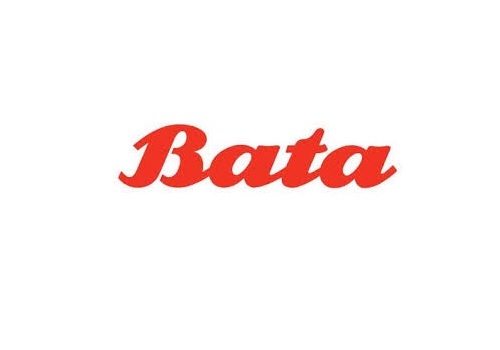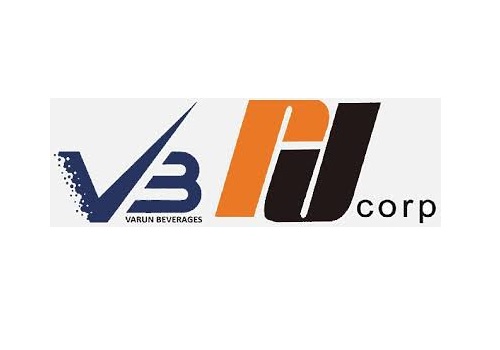Company Update : Campus Activewear Ltd By JM Financial Services

Ushering in new phase of Campus 2.0
We recently met the management of Campus Activewear, which said it is confident on regaining the lost growth momentum and is targeting mid teen’s revenue growth and 15- 17% margins over the medium term led by multiple initiatives it has taken over the past 18 months like (1) Plugging product portfolio gap, (2) curated marketing to improve brand image, (3) centralised planning and supply chain management, (4) shift towards a more market place model vs. outright earlier and (5) unlocking new channels of growth. We build in revenue/PAT (Pre-AS 116) CAGR of ~14%/32% over FY24-27 as we believe a combination of these measures coupled with BIS implementation should help lift revenue growth once the demand environment improves. In addition, a combination of low base, cost-efficiency measures and upfront investments in marketing and manpower should lead to higher growth in profits. We cut our EPS estimates by 1-4% over FY25-27E baking in margin pressure due to some front-loading of cost, benefits of which will be seen in future. We maintain BUY with a revised TP of INR 350 (from INR 340) based on 50x P/E as we roll over our target multiple to Mar’27
*Key challenges encountered: In the last 18 months, Campus faced challenges such as (i) distributor consolidation, (ii) channel conflicts pertaining to pricing and lack of coordination amongst SBUs, (iii) multiple top-level exits, (iv) large number of designs resulting in poor inventory management, (v) higher % of outright sales vs. market place, resulting in lower control over pricing and inventory, (vi) late entry in sneakers category.
*Many steps taken to revive growth and profitability like (i) Centralised planning for all channels, resulting in coordinated ordering and fulfilment; this will also lower finished good inventory and eliminate pricing conflict among channels (ii) completion of distributor consolidation and focus on driving higher throughput per retailer, (iii) decluttering inventory from 1,300 styles to only 500 now (200 core styles/ 300 new launches) with 150 separate designs for each channel (iv) reducing outright sales to 20% vs. 80% earlier, improving pricing and inventory control, (v) addition of sneakers category 18 months ago; aims to increase the share to double digits (7-8% now) with upcoming sneaker plant in Mar’25, (vi) focus on increasing share of high-growth women’s category and (vii) increasing penetration in the South (only 10% of revenue) through open footwear and gradually seeding in the closed footwear category.
*Realigned channel growth drivers: D2C Offline – focus to drive aggressive growth and increase salience to 15% by FY27 (11% in FY24) led by EBO addition (largely franchise mode) and increasing the LFS counters (Reliance, Lifestyle, etc.). Primarily role of the channel is to drive premiumisation and elevate consumer experience. D2C Online - cautious growth with focus on profitability; adding quick commerce platforms. It targets to maintain 80:20 market place: outright sale mix and expects ~35% contribution from the channel. Role will be to drive sneakers and women’s portfolio. Trade Distribution – Will remain the cash cow; Campus is targeting 50% revenue salience by FY27 with focus on improving throughput/distributor and increasing geographical reach.
Pivoting towards high-growth sneakers and women’s segments
*Increasing salience of sneaker category – Campus had a total addressable market of INR 220bn, which has increased by INR 10bn due to the introduction of sneaker products in its portfolio. The company is now launching new sneaker products with superior quality. This will help to drive higher realisation as MRP in the sneakers category is higher by ~INR 400 vs. average company MRP. ASP for the sneaker ranges from INR 1,299 to INR 3,500. The company started its sneaker category 12-18 months back and has increased the salience to 7-8% from 4% in FY24; it now targets to increase it to 20% over the next couple of years. The category has seen 70% YoY growth in H1.
*Enhanced focus towards women segment – Men/Women/Kids contribute 78%/14%/8% of overall revenue. The company aims to increase the share of women in overall revenue led by higher focus and offerings especially targeted at women. Increasing penetration in LFS counter and EBO addition will also led to increase in salience of the women’s segment as these channels have higher women contribution vs. MBOs.
*Controlling width to drive higher efficiency and inventory control – The Company earlier offered 1,300 styles with 3 colours and 6 sizes, which created complexity in terms of assortment and inventory management. It has now reduced styles to only 500. This decluttering of SKUs has helped the company to manage its finished good inventory efficiently.
Supply chain management and coordinated execution
*Centralised planning and inter channel synergies – Earlier, different channel heads had different strategies, which resulted in channel conflicts and poor coordination. Now, the process of planning and strategy formation is done differently for all the channels but is centralised at the business head level (headed by Uplaksh Tewary), which has reduced channel conflicts by offering different SKUs in different channels. The company has decided to offer ~150 different SKUs in its three channels. This also helps to drive interchannel synergies as the product offered in different channels at different prices reduces channel conflicts.
*WHS and RM efficiencies – The Company is consolidating its three RM warehouses into one centralised warehouse, which is likely to improve the lead time by 5 days. It is also consolidating its two online warehouses into one facility with higher area to cater to demand over the next 2-3 years. With more scientific and analytic process of ordering, Campus has been able to reduce its inventory of finished goods by 20% and the management feels that there is still scope of some inventory reduction, which will be done in due course.
*Capacity expansion – The Company is enhancing its sole production capacity by installing two new EVA injection lines, this would result in increase in sole capacity by 15%. It is also setting up a plant for uppers for sneaker, which will increase upper capacity by 2.5mn pairs annually. With increase in production capacity, the difference in cost will not be material but it will help in timely launch of new products and improve its way of working.
*Investment in automation – The company is investing in automation with its initial focus on digitisation of the front end. It has implemented DMS software and QR-based scanning system, which helps it track retailer level demand for its products. Its own stores are enabled with the Genesis system, which is integrated to its ERP system. The company is in the process of implementing SAP software in 4QFY25. It has already implemented PeopleStrong (HR-related software) and is also exploring automation tools for order management and tracking the entire process of new product development from concept to commercialisation.
Redefining roles of the channel
*D2C Offline – The company is targeting aggressive growth in its D2C offline channel and is aiming for 15% salience of the D2C offline channel in overall revenue by FY27 vs. ~11% in FY24. The growth will be led by (i) increasing store reach (292 stores as of now), and (ii) offering products at LFS counters (already partnered with Reliance Footprint, and Lifestyle; trying to partner with other LFS partners also). Primary role of the channel will be to drive premiumisation and elevate consumer experience. The company currently has 50:50 mix between franchise and own stores. It targets to add majority of the new stores under the franchise model, which will be asset light and drive store expansion at a fast pace.
*D2C online – The company is adopting a cautious approach for growth in its online channel and the major focus will be on increasing profitability. It will leverage its market place expertise to drive growth in the segment. Earlier, 80% of its products in the online segment were sold on outright basis and only 20% of the products were sold in the market place, which led to higher discounting, channel conflicts and lower control on inventory. It has now pivoted itself to the market place channel (80% contribution), and only 20% is on outright basis. It targets to maintain the salience of D2C online channel at ~35% by FY27. The company has also started offering products on quick commerce platforms like Blinkit and is trying to list with other players too.
*Trade distribution – The company has consolidated its distributors from 425+ earlier to 300+ now. The focus, going ahead, will be to increase its retailer reach and throughput per retailer. It has deployed 170 FoS (feet on street) who are working on its rolls and additional 150 FoS from the distributor with the primary objective of increasing retail penetration, increasing sales/outlet and maintain channel hygiene. It targets to expand its regional presence by using analytical and tech support via MBOs with higher growth in other channels; the channel contribution is expected to be 50% by FY27.
*Geographical expansion – The company plans to improve its presence in the South and is working on multiple enablers including product and channel to gain its fair share in southern India.
Others
*Profitability – All the three channels are profitable for the company, and it expects gradual uptick in profitability. Majority of the upfront spending is done in terms of (i) marketing, (ii) capacity expansion, (iii) automation cost, and (iv) manpower hiring expense. The company has an employee base of ~1,000 employees, which the management feels is sufficient to clock a revenue of INR 40bn. It has already lifted gross margin to 52-53% (vs. 49-50% in the past), which, along with benefits from higher capacity utilisation, reduced upfront cost, and better operating leverage will lead to improvement in EBITDA margin.
*Working capital – The company has a core working capital cycle of 79 days in FY24, constituting 100 days of inventory, 30 days of debtors, and 50 days of creditors. Finished goods inventory constitute 20% of the overall inventory and the balance 80% is raw material only. Inventory days are expected to reduce down to 90 days in the next few years led by optimisation of RM inventory (100 days of inventory expected in FY25).
*Marketing – The company has heightened its focus on marketing and has increased its spends ~3x in FY24 vs. FY21. Segregated channel strategies, improved product quality and better marketing, as well as onboarding of actors Vicky Kaushal and Sonam Bajwa for brand endorsement have helped improve the company’s brand image. Marketing strategies for different channels are set differently to target specific customers, which helps drive growth in all channels separately.
Please refer disclaimer at https://www.jmfl.com/disclaimer
SEBI Registration Number is INM000010361
